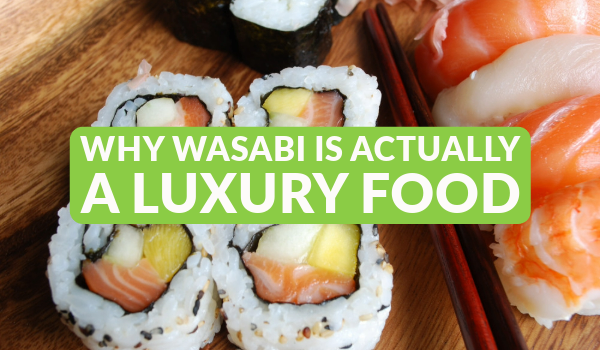
Wasabi is a popular condiment, often associated with sushi, but what many people don’t know is that the wasabi commonly served in restaurants is actually a luxury food. Depending on the type of wasabi you order, it can even sometimes cost as much as $250 per kilogram. This raises the question: why is wasabi a luxury food?
The Process of Growing Wasabi
One of the main reasons real wasabi is a luxury food is the meticulous and time-consuming process required to grow it. Wasabi comes from a plant that must be cultivated under very specific conditions.
Wasabi plants thrive in shaded mountain streams, where they need to avoid direct sunlight and be submerged in cold water. The soil conditions also have to be just right for the plant to survive. This delicate balance makes wasabi farming a challenging and risky endeavor.
Wasabi producers invest heavily in creating the perfect environment for these plants. It can cost around $700,000 per acre to establish a wasabi farm. Even then, the plants are vulnerable and can die if conditions are not maintained perfectly. After 6 to 8 weeks, the outer leaves of the wasabi plant can be harvested, but the edible stem, which is ground to make wasabi, takes about two years to mature. This long growing period adds to the overall cost and scarcity of wasabi.
How Wasabi Is Made
Once the wasabi plant has matured, the stem is grated to produce wasabi. Unlike the common wasabi paste, wasabi is traditionally not made into a paste but is served fresh, straight from the plant. This fresh wasabi has a distinct taste: it is spicier than other options, with an initial kick that clears the sinuses, followed by a sweet, plant-like aftertaste. The fresh-grated wasabi also has a sweet veggie flavor that lingers after the spicy sensation subsides.
The Taste Difference
Many people wonder if the high cost of wasabi is justified by its taste. Fresh wasabi offers a complex flavor profile. Lower-cost wasabi hits with heat and then quickly dissipates, whereas higher-cost wasabi provides a more nuanced experience, with a balance of heat, sweetness, and a lasting aftertaste. For true food connoisseurs, this difference in taste can make the expense worthwhile.
Health Benefits of Wasabi
Aside from its unique flavor, wasabi also has health benefits. It has antimicrobial properties, which can help reduce the risk of foodborne illnesses. Wasabi has been used in Japan for over four centuries, initially to combat food poisoning by being topped on raw meat. Additionally, wasabi can help relieve inflammation, fight cell damage, and improve respiratory health.
Conclusion
The extensive process involved in growing, harvesting, and producing wasabi explains its high cost and rarity. Wasabi producers face numerous challenges to bring this luxury item to market, resulting in a price that reflects the effort and precision required. While the $250 price tag may seem steep, for those who appreciate the distinct taste and health benefits, wasabi can be a worthy indulgence. However, for most people, the lower-cost option provides a similar kick, making it a more practical choice for everyday use.

